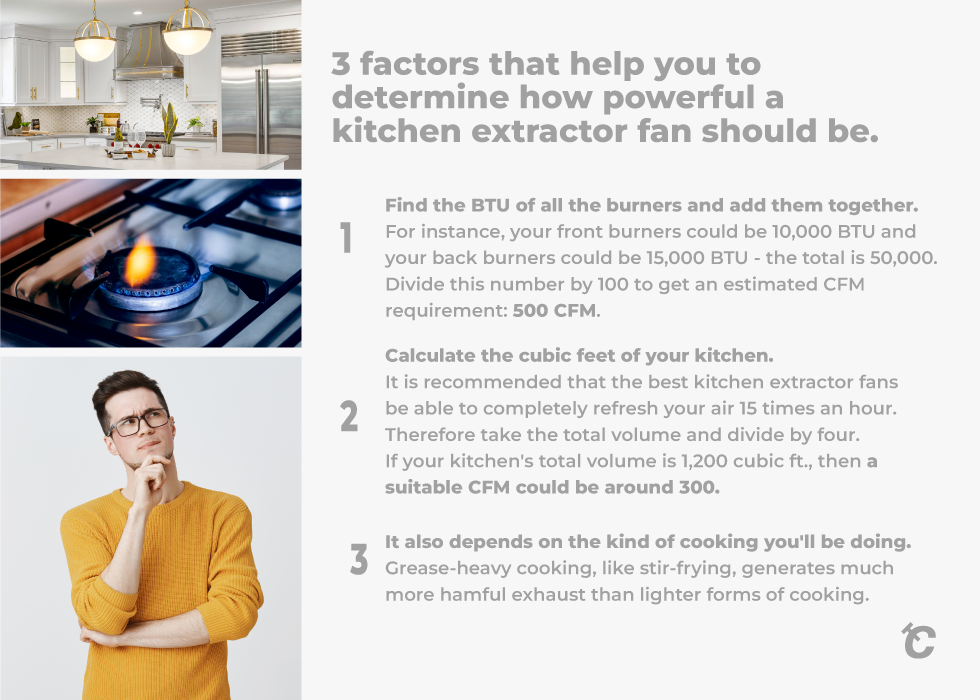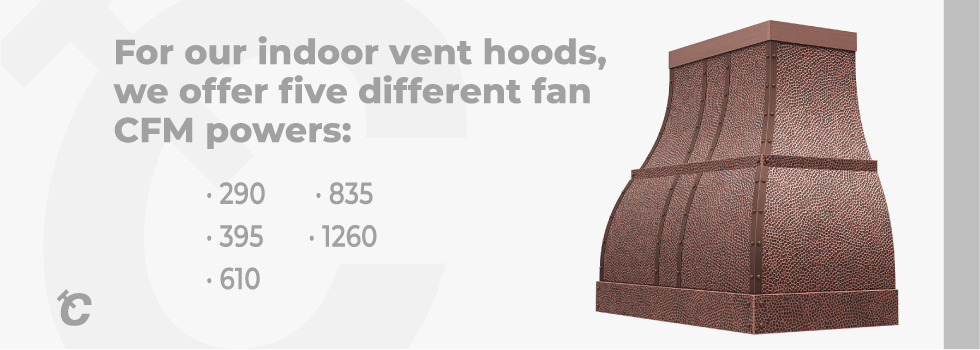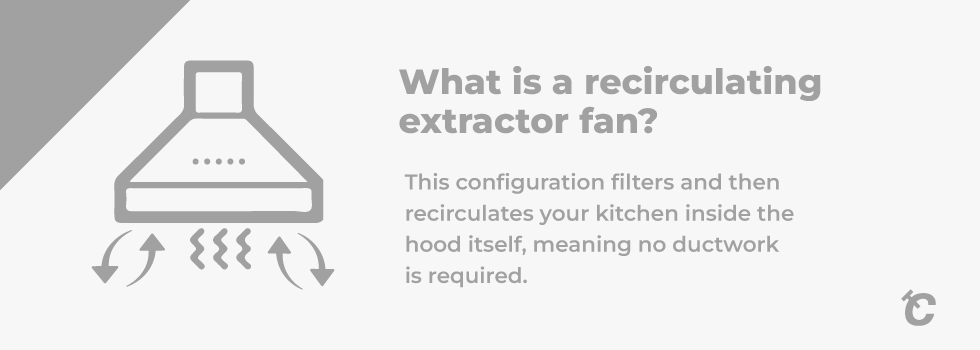World CopperSmith - Kitchen Extractor Fans

Undeniably, the most important part of a car is its engine. It provides the power crucial to the functioning of the machine. When you're looking at a new car, it would be ridiculous to ignore the engine.
It's no different when it comes to choosing the best kitchen extractor fan for your range hood. A gorgeous stainless steel finish does not itself make a clean kitchen. Your new range hood may look beautiful (and if it's a CopperSmith, it surely will), but without a suitably powerful extractor fan, it'll never get the job done of purifying your home's air.
In this blog, we'll cover the different extractor fans (also called insert fans) offered by World CopperSmith and answer some commonly asked questions.
Are kitchen extractor fans worth it?
If you care about the quality of the air you breathe in your home, if you want to reduce cooking smells and odors, if you want to prevent smoke from discoloring curtains or paint, then the right range hood with a powerful kitchen extractor fan is an absolute must.

World CopperSmith's fans
For our indoor vent hoods, we offer five different fan CFM powers.
How powerful should a kitchen extractor fan be?

The answer to this question will depend on a few factors. There is no absolute rule, but rather several suggested methods of finding a good CFM for your space. Feel free to ask our expert customer service if you want assistance.
Firstly, you'll want to calculate the total heat output (BTU) of your stove. Find the BTU of all the burners and add them together. For instance, your front burners could be 10,000 BTU and your back burners could be 15,000 BTU - the total is 50,000. Divide this number by 100 to get an estimated CFM requirement: 500 CFM.
Secondly, how large is the space you're trying to ventilate? Calculate the cubic feet of your kitchen. It is recommended that the best kitchen extractor fans be able to completely refresh your air 15 times an hour. Therefore take the total volume and divide by four. If your kitchen's total volume is 1,200 cubic ft., then a suitable CFM could be around 300.
Ultimately, it also depends on the kind of cooking you'll be doing. Grease-heavy cooking, like stir-frying, generates much more harmful exhaust than lighter forms of cooking.
The find the best extractor fan for your space, take all of these factors into consideration. If one of those two rule-of-thumb numbers is higher, it's probably wise to go with a fan closer to that number. Here are the five CFM powers offered in CopperSmith's range hoods:
- 290
- 395
- 610
- 835
- 1260
Some fans are only compatible with smaller or larger hoods. A 30" hood can't fit a 1260 CFM fan, and a 72" hood can't fit a 290 CFM fan.
Range hoods over kitchen islands may benefit from a higher CFM, as particulates have more space to escape compared to wall-mounted range hoods where the exhaust capture is better controlled by the geometry of the kitchen.

Do you need a hole in the wall for an extractor fan?
Your insert fan will install directly into your range hood, whether that be a kitchen island hood or a wall-mounted hood. No additional hole besides the one made for the range hood is needed.
How do you install a kitchen extractor fan?
Your CopperSmith range hood is designed to accommodate your insert fan. Instructions are included for easy installation. As our fans are hard-wired, an electrician is required to complete the installation.
What is a recirculating extractor fan?
A recirculating extractor fan is another way of saying a ductless fan. This configuration filters and then recirculates your kitchen inside the hood itself, meaning no ductwork is required.

Clean air with CopperSmith
A good kitchen deserves clean air. Your CopperSmith range hood's extractor insert fan will get the job done for any space. Breathe easy with an extractor fan from World CopperSmith.

